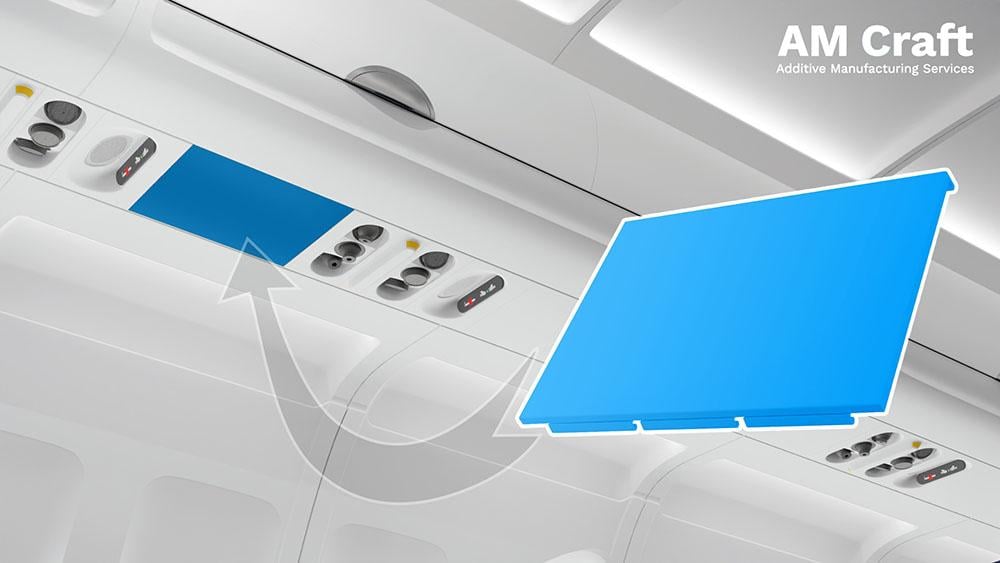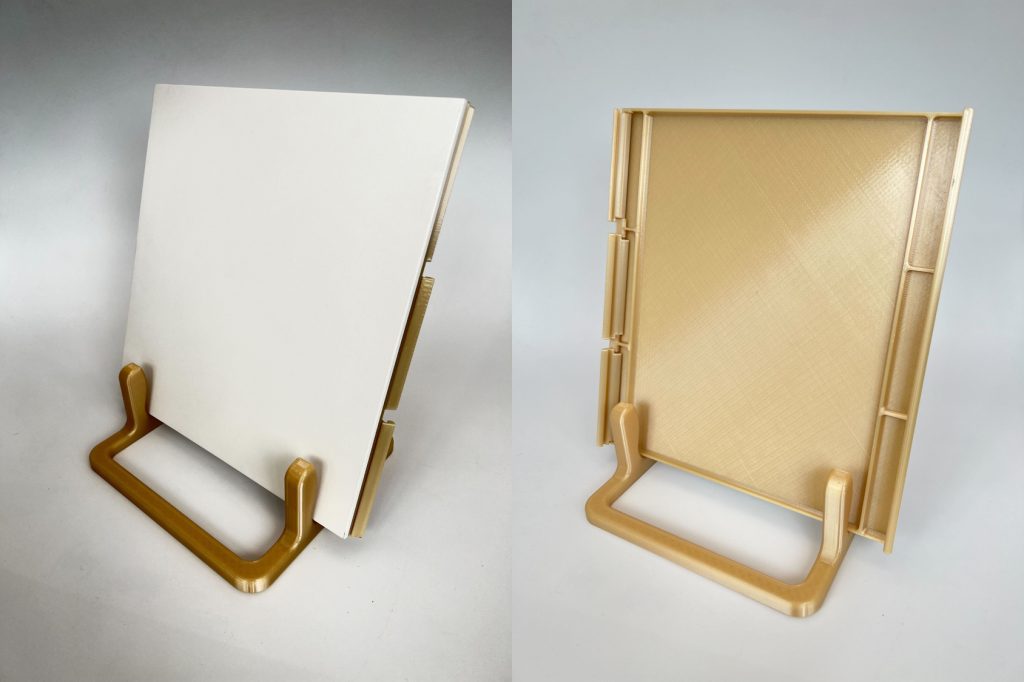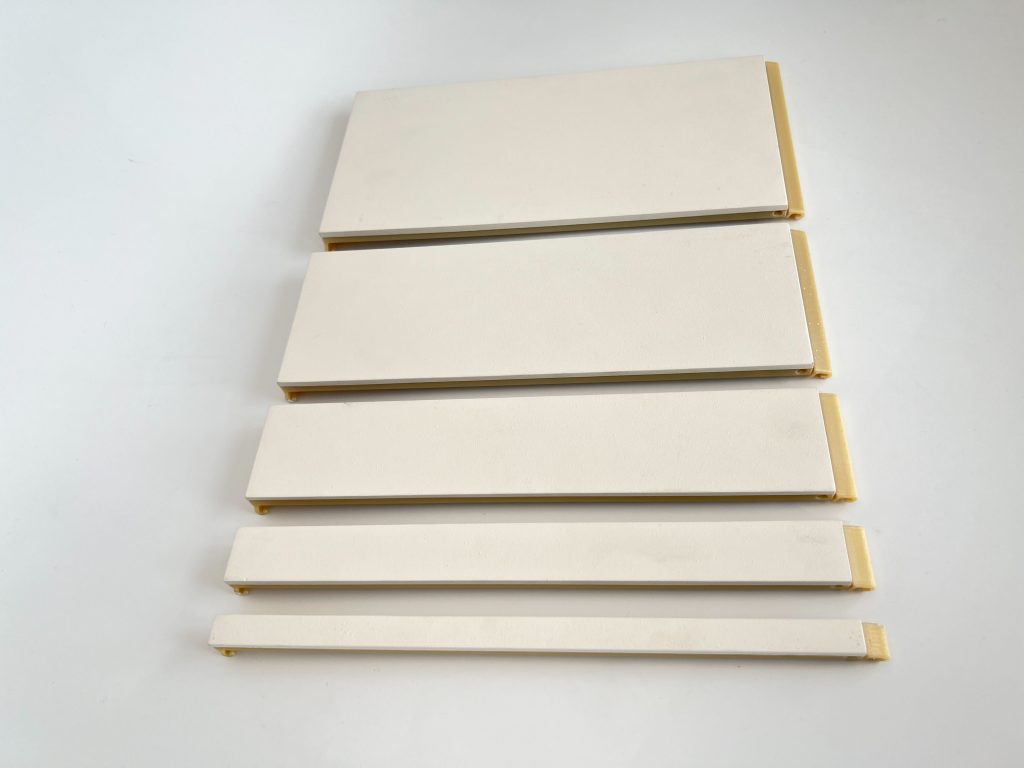Aviation manufacturing firm AM Craft is supplying 3D printed aircraft interior parts to commercial airline company Finnair.
The FDM 3D printed blanking panels will be installed into Finnair’s fleet of Airbus A320 aircraft, replacing existing flip-down video monitors that are said to be heavy and outdated.
More than 300 of these 3D printed components are being delivered on a just-in-time basis, with Finnair looking to upgrade the Passenger Service Units (PSUs) of 17 A320s. The aviation firm believes this 3D printing strategy will minimize excess inventory and eliminate costs associated with its existing supply chain.
As an EASA-authorized Part 21G aviation supplier, AM Craft’s 3D printed components are delivered with the necessary certification to be installed straight into the aircraft. Previously, the firm has delivered airworthy 3D printed components to airBaltic, euroAtlantic Airways and Zim Aircraft Seating.
The blanking panels have also been incorporated into the company’s digital catalog, and can be purchased by any airline looking to upgrade its passenger aircraft. This adds to AM Craft’s existing portfolio of 3D printed parts for flight decks, monuments and galleys, overhead bins and seats.
“This project is a great example of how well additive manufacturing fits within the aviation sector. As the average age of the commercial fleet continues to grow, there are many opportunities where it makes sense to redesign a part and produce only the quantity needed rather than try to leverage the long lead- times of the original source,” explained AM Craft’s Co-founder and Chief Commercial Officer Janis Jatnieks.
“Without additive manufacturing, this could have been a much slower and more expensive project, but because AM Craft can manage the entire project to design and certify a printable solution, Finnair saved time and money,” added Jatnieks.

3D printing aircraft interiors at AM Craft
Founded in 2018, AM Craft seeks to overcome part sourcing challenges within the commercial aviation industry through its 3D printing-driven network manufacturing model.
Headquartered in Riga, Latvia, the firm possesses additive manufacturing hubs in Europe, the Middle East and Asia. Earlier this month, AM Craft announced that it had raised €600,000 in pre-seed funding to grow its Dubai network partner manufacturer hub. Opened in September 2023, this hub sees AM Craft’s manufacturing partner Paradigm 3D produce 3D printed certified aircraft parts for customers in the Middle East.
“Because of our network of approved production facilities, if the next part is needed in Dubai or Singapore, we can produce it locally and have it ready to install wherever it is needed without stocking or shipping,” stated Jatnieks.
Throughout its manufacturing network, AM Craft possesses over 60 industrial 3D printers, many of which are FDM systems from 3D printer manufacturer Stratasys. In 2020, the company purchased four Stratasys F900 3D printers, adding to its existing suite of Fortus F450mc systems.
When used with ULTEM 9085 resin, the F900 can fabricate aircraft interior parts that meet stringent industry regulations. For instance, the materials’ flame-retardant qualities allow the parts to abide by strict flame, smoke, and toxicity (FST) aerospace criteria.

3D printed components upgrade Finnair’s aircraft cabins
AM Craft worked directly with Finnair to turn its panel upgrade concept into a certifiable design that could be produced using its Stratasys FDM 3D printers and ULTEM 9085 filament. Once 3D printed, the parts were finished in AM Craft’s certified paint shop.
By 3D printing the components, the AM Craft team was able to reduce their weight and specifically tailor their size to meet customer needs. The blanking panels were designed to fit onto the existing mounting rails, reportedly making them easy to install. As such, the old video monitors can be swapped out for the new 3D printed panels in just 10 minutes. This typically translates to around 20 labor hours of work per aircraft.
According to Finnair, this is the first time the commercial airline company has adopted additive manufacturing to update its aircraft. Installation of the AM Craft-3D printed components began in Q4 2023, and is expected to be complete by the end of 2024.
Both Finnair and AM Craft view this collaboration as a success, with the companies open to pursuing additional 3D printing projects in the future. The parts delivered by AM Craft have reportedly been high quality and delivered on time, according to Totti Pekonen, Finnair’s manager of Cabin & Payload Engineering.
“Though they were a new supplier for us on the PSU project, we have been very impressed by their expertise and professionalism and look forward to continuing to work with them,” he added.

3D printing: the future for commercial aviation?
Amid persistent challenges to global supply chains, commercial aviation firms are increasingly leveraging additive manufacturing to maintain and upgrade their aircraft.
UK-based air distribution systems manufacturer Senior Aerospace BWT leverages its in-house Stratasys systems to 3D print aircraft interior parts for its commercial aviation customers. The company has also completed a rigorous testing and qualification program for ULTEM 9085, allowing it to use the material in the production of certified, flight-ready parts.
In 2021, the firm acquired two 450mc 3D printers from Stratasys technology reseller Tri-Tech 3D. These industrial FDM systems have since been used to manufacture aerospace and aviation interior components, including parts for low-pressure air ducting and air handling systems. 3D printing has allowed the Senior Aerospace BWT to achieve lead time savings of up to 75% for certain parts and small order quantities.
Elsewhere, Russian state-owned industrial technology conglomerate Rostec received a license from the Russian Ministry of Industry and Trade for the serial production of 3D printed aircraft parts. The license reportedly allows Rostec to conduct high-volume 3D printing and testing of components for civil airlines, helicopters, and engines.
According to Rostec, industrial 3D printing can shorten production times of certain aerospace components from six months to just three weeks. The firm has also observed weight benefits, with the 3D printed parts being substantially lighter than those produced with conventional manufacturing.
Want to help select the winners of the 2024 3D Printing Industry Awards? Join the Expert Committee today.
What does the future of 3D printing hold?
What near-term 3D printing trends have been highlighted by industry experts?
Subscribe to the 3D Printing Industry newsletter to keep up to date with the latest 3D printing news.
You can also follow us on Twitter, like our Facebook page, and subscribe to the 3D Printing Industry Youtube channel to access more exclusive content.
Featured image shows the 3D printed PSU in-fill panel installation within the aircraft cabin interior. Image via AM Craft.


